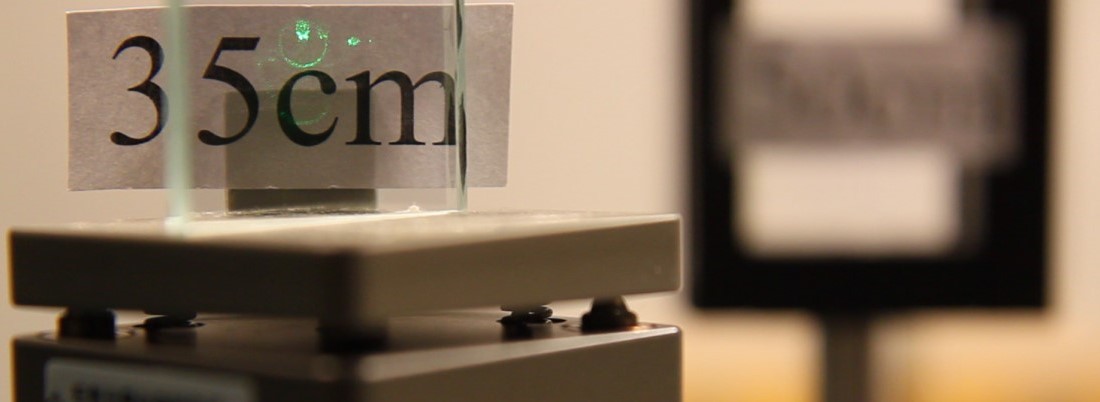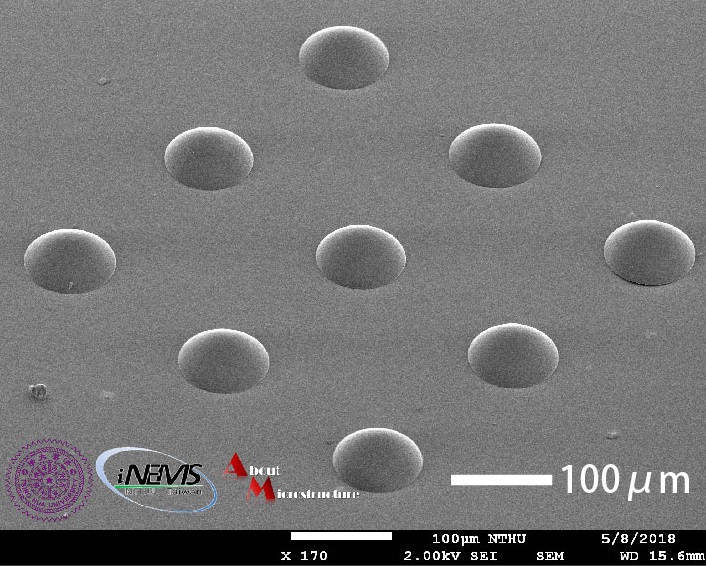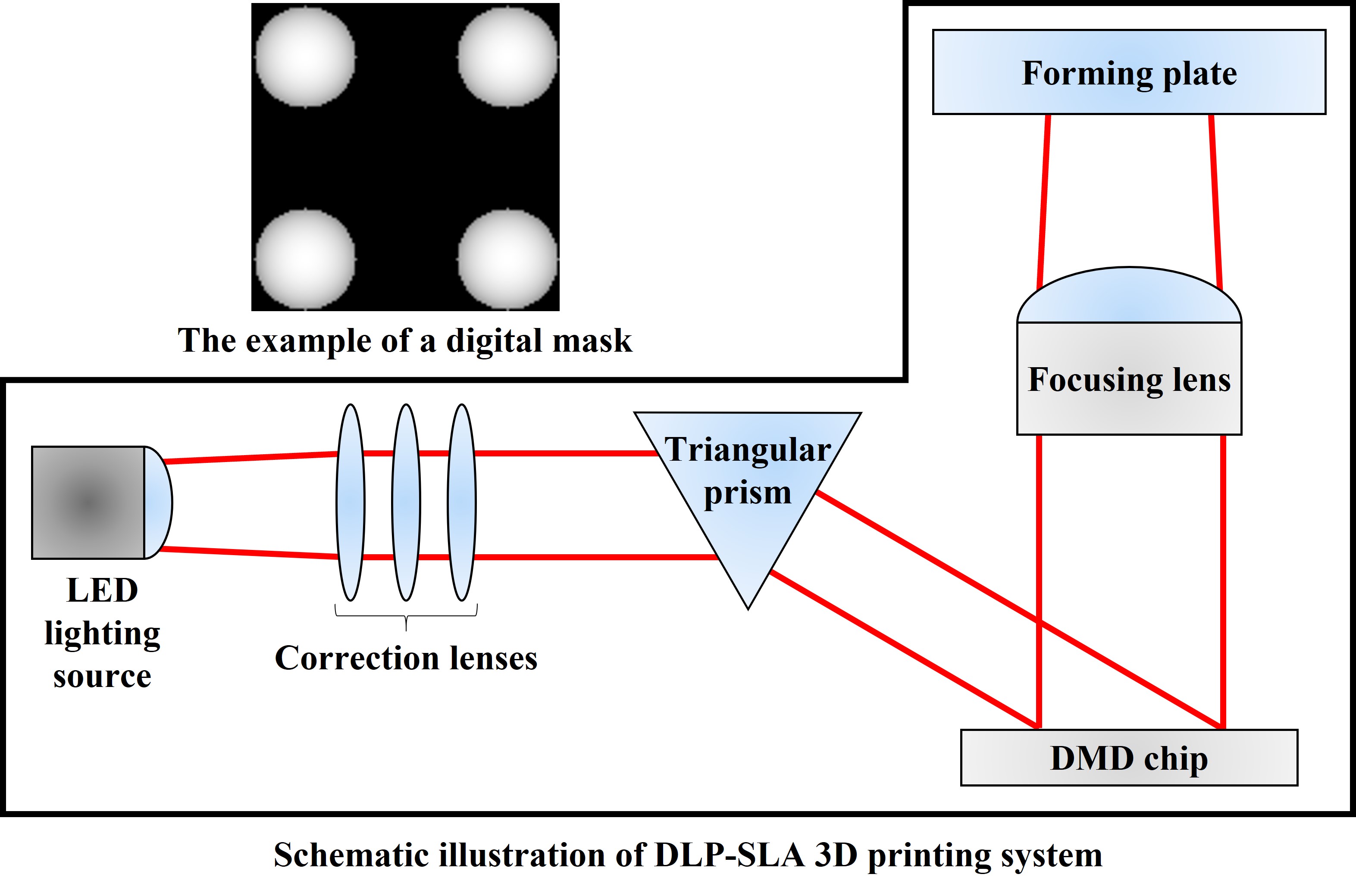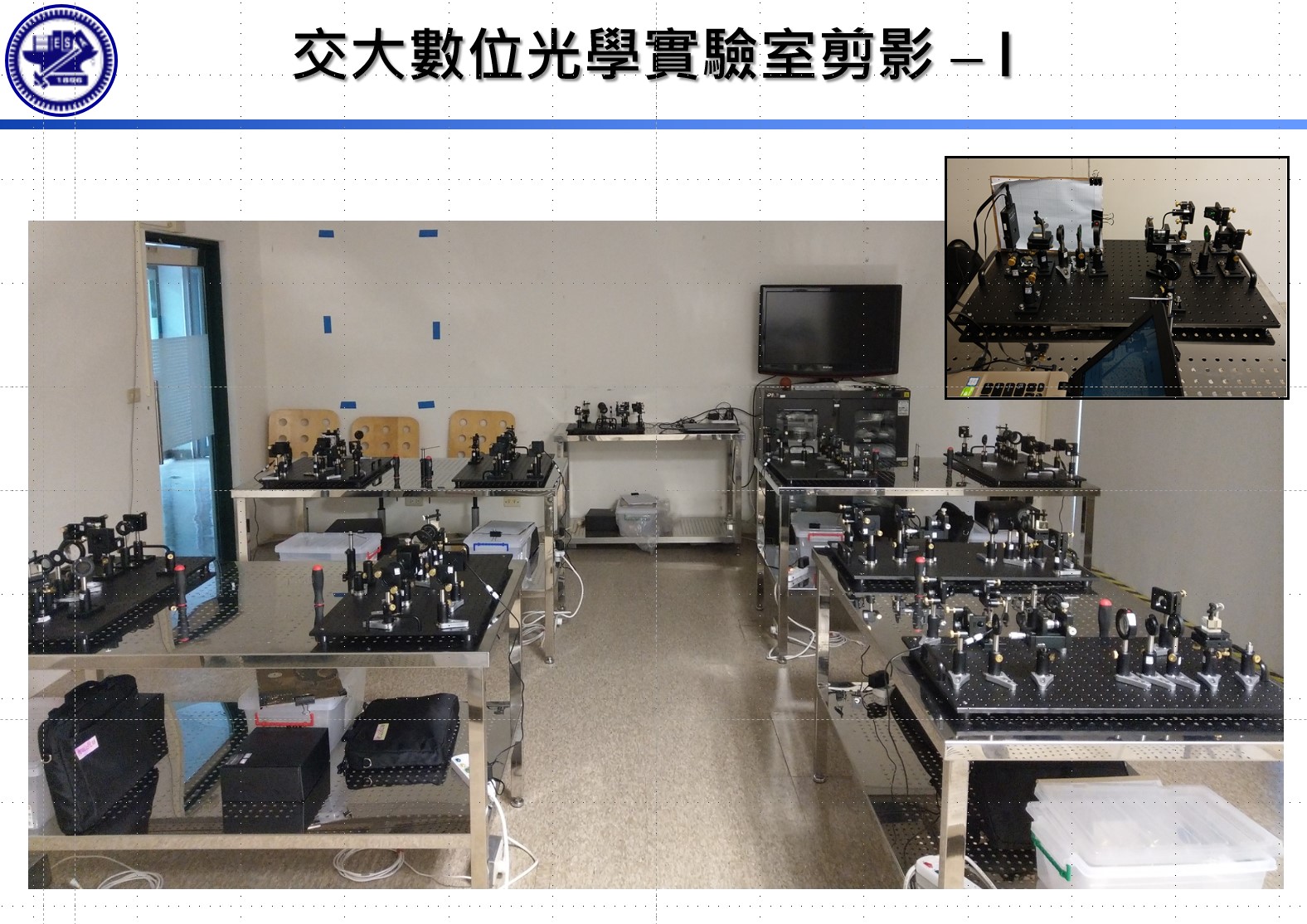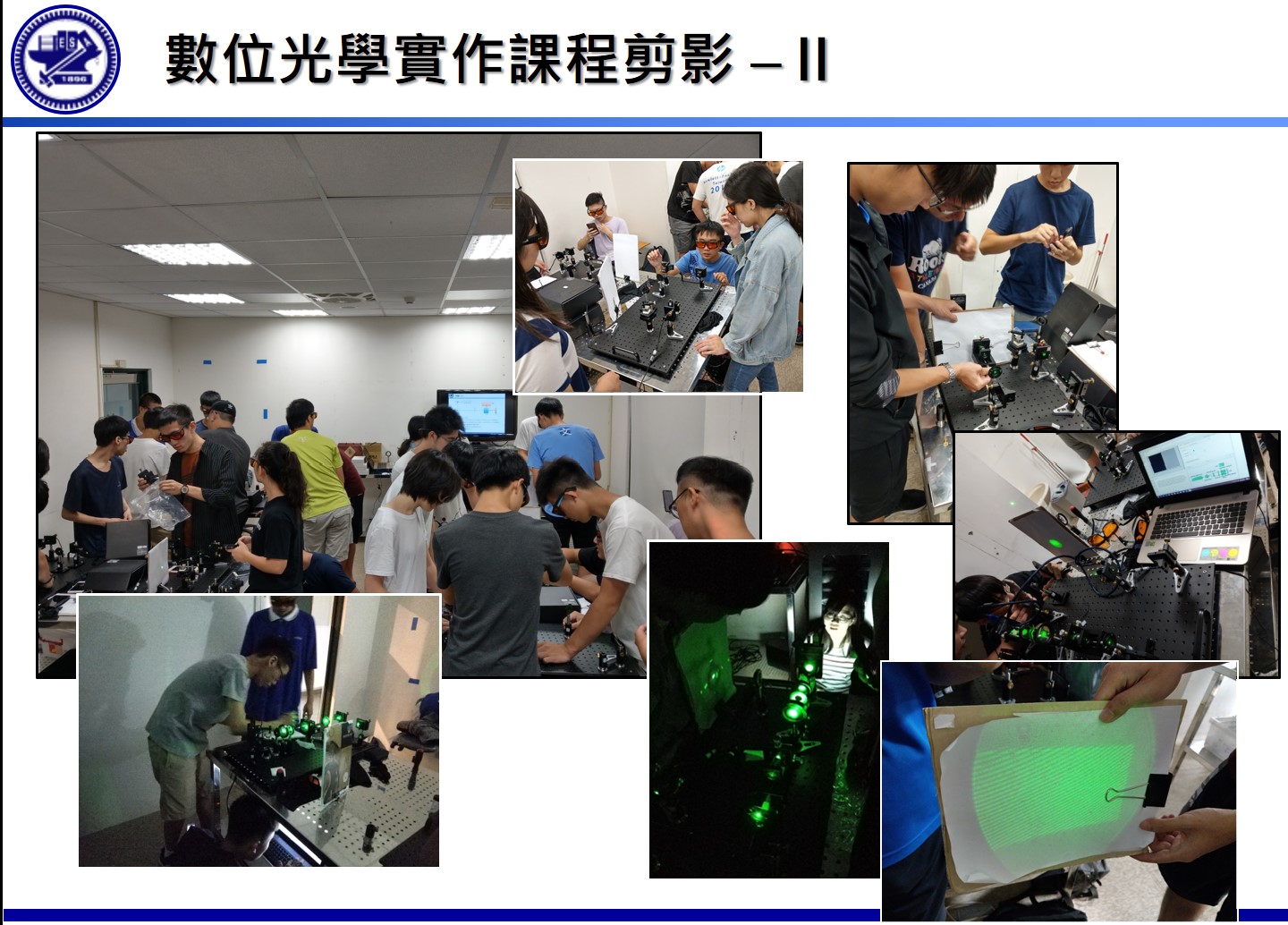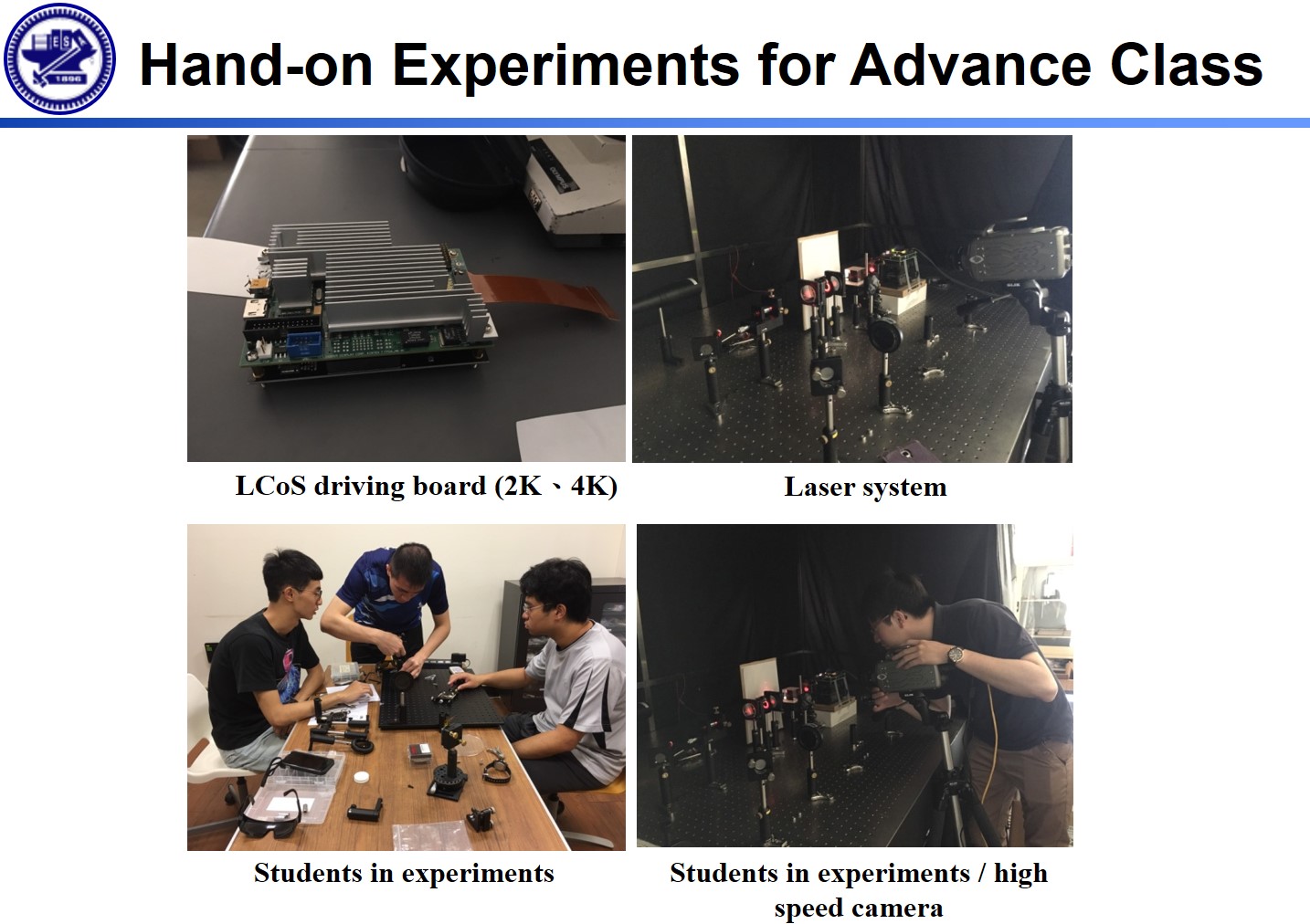| Technical Name | 數位光學教學實驗室推廣計畫 | ||
|---|---|---|---|
| Project Operator | National Yang Ming Chiao Tung University | ||
| Project Host | 陳皇銘 | ||
| Summary | This project with aim of promoting digital optics education is funded by Ministry of Education. In the entry-level class, students are guided in the hand-on experiments to bring up the ability to set up optical pathsto learn the basic optics principles. In the advance-level class, students are encouraged to work on a 3D holographic project using the fast-response LCOS-SLM developed in Digital Optics Teaching Laboratory of NYCU. Students are able to apply different computer-generated holography (CGH) algorithmsdesign optical path accordingly to obtain desired holographic images. |
||
| Scientific Breakthrough | The faster response LCOS with low temporal fluctuationszero order light loss have been developed in our laboratory. Four significant features are (1) LTF mode is ~3× times faster than the commercial analog LCOS with low temporal fluctuation (P-P~2.0 mSTD 0.02π), (2) TKS mode is ~4× times faster than the commercial digital LCOS, yet maintained phase linearity, precision, accuracy,stability (P-P~3.0 ), (3) The world's fastest 1 ms phase-only LCOS at 45℃. (4) Our latest LCOS-SLM processes 3 ms response timeis able to withstand 2160 J/cm2 at 405 nm for near-UV application. |
||
| Industrial Applicability | Digital optics can be fully digitized for applications, such as 3D stereoscopic imaging, extended depth of field, 3D information capture, spectral imaging,super resolution. It has changed the design of optimizing optics in the optical industry. A digital optics course is designed for non-major undergraduate students. The LTF mode LCOS possesses lowest the mSTD value (0.02π) with less than 10 ms, which is about 3 times faster than the current commercial analog LCOS-SLM (from Hamamatsu Photonic) is provided. For high-speed modulation holographic projection needs, 1 ms LCOS-SLM is provided. |
||
| Matching Needs | 天使投資人、策略合作夥伴 |
||
| Keyword | digital optics phase-only SLM adaptive optics 3D display beam shaping telecommunication super resolution holography liquid crystal on silicon | ||
- keyu@mail.nctu.edu.tw
other people also saw


